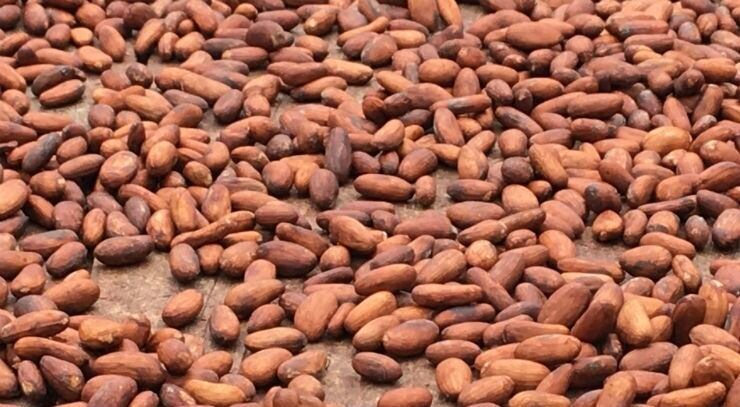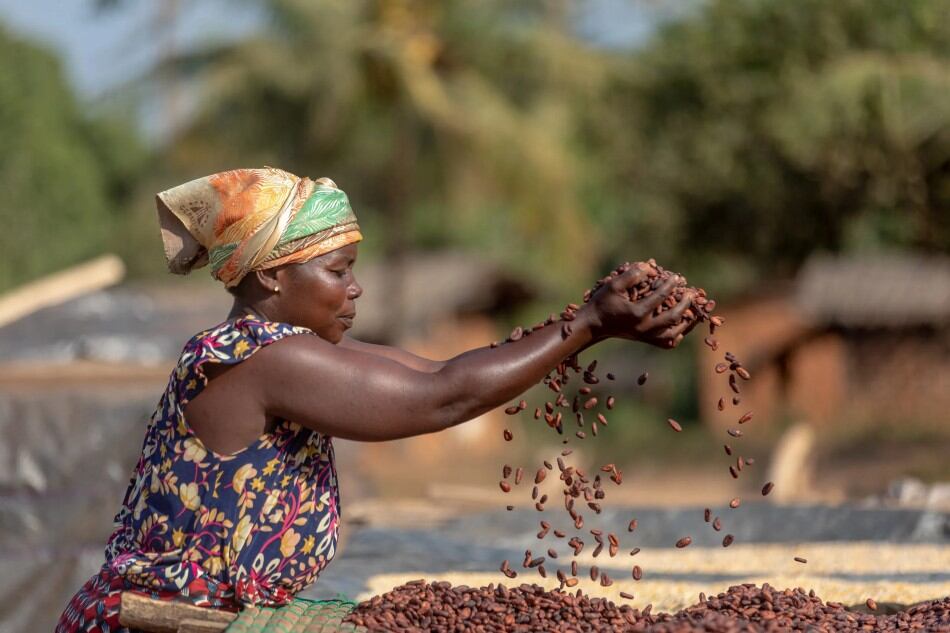The European Cocoa Association has reported that Q3 cocoa processing in the region fell -0.9% y/y to 366,298 MT, an improvement from the -5.7% y/y decline in Q2.
Commodities trading platform ICE saw gains, with NY cocoa posting a 3-week high and London cocoa posting an all-time nearest-futures high, reflecting tight cocoa supplies as ICE-monitored cocoa inventories held in US ports have declined steadily over the past four months to a 1-1/2 year low earlier this week.
Cocoa prices remain well supported by concern that an El Nino weather event could undercut global cocoa production, according to barchart.com.
In its Cocoa Market Report 2023, The International Cocoa Organization (ICCO) forecasts global 2022-23 cocoa production to increase +2.4% y/y to 4.938 MMT and global cocoa grindings to increase +0.2% y/y to 5.005 MMT.
The ICCO estimates the total end of season 2022-23 global cocoa stocks of 1.707 MMT and the cocoa stocks-to-grinding ratio to fall to a 7-year low of 34.5%. The ICCO projected a global cocoa deficit for 2022-23 of -146,000 tons and said, "The expectation of a supply deficit has been compounded with weather variations, especially in West Africa”.
2022-23 season
A deficit of around 100,000 tonnes is currently estimated for the 2022-23 season which just ended, said the ICCO. “At this point last year, market participants had predicted a balanced situation for the season. But adverse weather conditions in Cote d’Ivoire and Ghana soon led to a change in these expectations.
"As cumulative port arrivals indicated that the market was heading towards a supply deficit, cocoa prices in real terms surpassed the levels recorded during the 2021-22 season This, coupled with the news of an expected El Nino weather phenomenon, supported the rally of cocoa prices. So far, so good for some farmers and exporters, but not most of them.”
Bean hoarding
This is because the Ivorian and Ghanaian pricing mechanisms provide a guaranteed price paid to farmers. In both Cote d’Ivoire and Ghana, the guaranteed price ended up being relatively lower than the farmgate prices in neighbouring countries, which had become more attractive.
According to the ICCO, cross-border flows of illegal cocoa beans have been reported. “At present, however, it is impossible to assess the extent of this geographical arbitrage as the 2023.Q3 official trade statistics will become available in 2024 Q1 only.”
Furthermore, said the ICCO, hoarding of cocoa beans was observed in Cote d’Ivoire and Ghana during the latter part of the 2022-23 mid-crop. This was fuelled by expectations of a higher farmgate price for the 2023-24 season. The incidence of bean hoarding is reported to be one of the disruptions that led Ghana to open the 2023-24 season earlier on 8 September 2023 instead of the start of October 2023.
If farmers hoarded cocoa, does this really reflect that the volume of production for the just-ended 2022-23 may be higher than actual arrivals and purchases for the season?
While a ‘backwardation’ was reported on the cocoa futures market during the month of September, the market is anticipating an ease on supply ‘tightness’, (intertemporal arbitrage). However, the ICCO said it is too early to assess the 2023-24 crop development. Reports of pod counting for the main crop season are not favourable; and data on port arrivals are also limited. Moreover, it is unclear how El Nino will play out during the current season.
Rains in Africa
Due to recent heavy rain in West Africa, black pod disease has spread. The spread of the disease, which causes cocoa pods to turn black and rot, could result in lower cocoa crop quality and production and push the global cocoa market into a third year of deficit for the 2023-24 season, Nasdaq analysts are predicting. Also, the spread of the swollen shoot virus is threatening Cote d’Ivoire cocoa crops, the world’s largest producer. Tropical Research Services estimates that about 20% of the cocoa crop in the Ivory Coast is infected with the swollen shoot virus.
There is also concern about lower cocoa production in Ghana, the world's second-largest producer, in another positive development for cocoa prices. Ghana's cocoa regulator (COCOBOD) said in August that its cocoa farmers would unlikely be able to fulfil some of its cocoa contracts for a second season.
COCOBOD has reported to have postponed 44,000 MT of cocoa shipments to future seasons due to a lack of supplies. Ghana's 2022-23 cocoa crop is now expected at around 650,000 MT, a 13-year low and 24% below initial estimates of 850,000 MT, as a lack of fertilizers and black pod disease hit cocoa yields.




